by Editor | Sep 7, 2009 | Products
Article and photo by Josette King
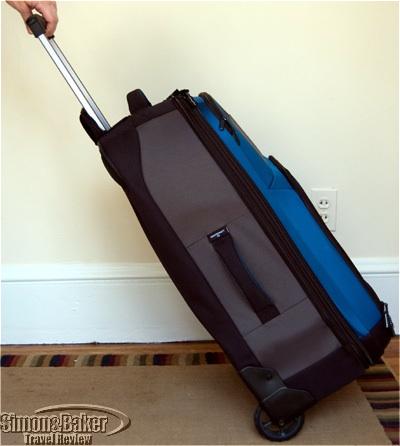
Hovercraft 25 inch Duffel from Eagle Creek
When it comes to packing, decades of traveling solo to have made me a minimalist: I learned early on the wisdom of lugging only what I can comfortably handle on my own. However, in recent years, my propensity for lengthy, complex itineraries coupled with the airlines’ increasingly restrictive luggage allowances have presented me with ever more difficult choices. My sturdy, tidily organized hard-sided suitcases of early times, or a light-weight, roomy but hard to pack and handle duffel bag?
The Eagle Creek Hovercraft 25 solved my dilemma. With firm, heavy gauge Cordura nylon shell, super-stable wheel base and multiple grab handles, its especially roomy interior and multiple, easily accessible compartments inside and out, it delivered the most desirable features of both hard and soft-sided luggage.
Other Eagle Creek luggage our teams have tested and liked include ORV Trunk 30, Eagle Creek ORV Gear Bag, and Eagle Creek Tarmac 22. Click here for detailed information on the many outstanding features that have made the Eagle Creek Hovercraft 25 one of my favorite long trip companions.
by Editor | Jul 27, 2009 | Accomodations, Books, Ecotourism, Luxury Travel, New Articles, Products, Restaurants, Spas
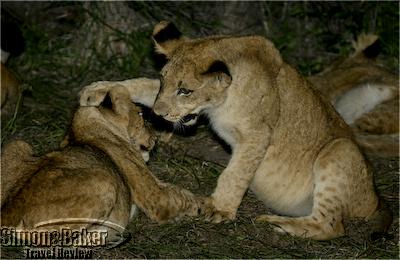
Lions at Rattray's
Many travelers familiar with luxury safari lodges in South Africa know of or may have stayed at the Mala Mala Reserve, one of the oldest reserves within the larger Sabi Sand Reserve. The well known reserve fronts a fenceless portion of the http://simonandbaker.com/kruger.
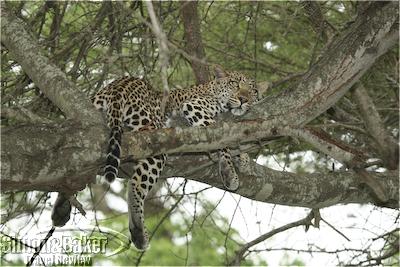
A vigilant kitty at Rattray's

Our team's suite at Rattray's
The family owned property offers accommodations for 54 guests in the Mala Mala Main Camp . Nearby there are exclusive luxury accommodations at Rattray’s, an eight suite fenced lodge for guests 16 and older with a fitness center and swimming pool. Click here to read about our team’s impressions during their most recent visit in a dedicated article about Rattray’s.
by Editor | Mar 23, 2009 | Books, Products
By Chester Godsy
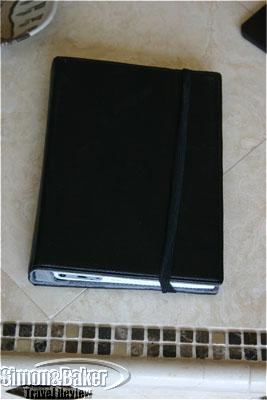
The Kindle closed
I have been very happy with my new Amazon Kindle. The readability of the screen is what really makes this device work. For the display it uses a type of opaque screen technology called E Ink. This display works very well in all types of lighting situations except for in the dark because it isn’t back lit. I would compare the screen very closely to the quality of a paperback book.
I finished reading several books on my Kindle. Soon after purchasing my first Kindle book we went on a long car trip across the country. During this trip I finished reading my first book. With no more books to read I then enabled the Kindle’s cell phone interface and began browsing the online Kindle book store (currently claiming over 240,000 titles) and found another book that I wanted to read. I purchased the book and it downloaded automatically to my Kindle as we were driving down the road. I was pretty happy to be able to get another book to read while riding down the highway in a car.
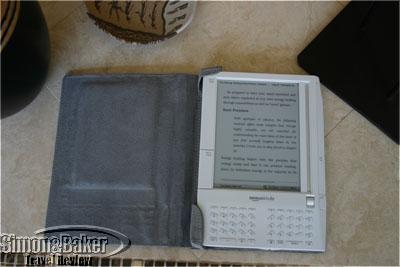
The Kindle open
Kindle book prices seem to always be lower than paperback versions; discounts vary anywhere from around a 25 percent to 75 percent over the paperback book versions. The Kindle uses a cellular phone network to download content from Amazon. The cellular phone interface is built into the Kindle and can be enabled or disabled with a switch located on the back of the device. As long as you use the built cell phone network to browse the Amazon store and download its content there is no extra charge for the cell phone connection time.
Another feature of the Kindle that I tried is the ability to convert document files into the Kindle book format. There are two methods of conversion available for Kindle users. One version requires payment to convert the document and then it automatically downloads to your Kindle. I used the free version to convert some technical papers into the Kindle format. With the free version it is necessary have to copy the converted files manually to your Kindle using a USB cable.
There are a couple of experimental features on the Kindle. One of them is the ability to play music. I downloaded mp3 files to my Kindle and tried this feature. It is a very primitive audio player. It just played the music I downloaded in a loop. I found this good if I want relaxing background music playing while I read. The other experimental feature is web browsing which I did not try because of the extra charges I would have incurred to access the web from my Kindle. Aside from the experimental features, after eight weeks I am pleased with the Kindle as a device to read books.
Click here to buy Kindle: Amazon’s Wireless Reading Device or
or
the new Kindle 2: Amazon’s New Wireless Reading Device (Latest Generation)
by Editor | Mar 9, 2009 | Ecotourism, Luxury Travel, Products
Article and photos by Gary Cox

The Wimberley Head Version II
While on safari in South Africa last year, a ranger who was a fellow photographer, introduced me to the Wimberley Head. Mounted on a standard super clip, this piece of equipment revolutionized my game viewing photography. The super clip securely holds my 100-400 millimeter telephoto lens comfortably mounted onto the bars on the Land Rover or other game viewing vehicle. The telephoto lens is fitted with an Arca-Swiss style plate purchased separately from Wimberley.
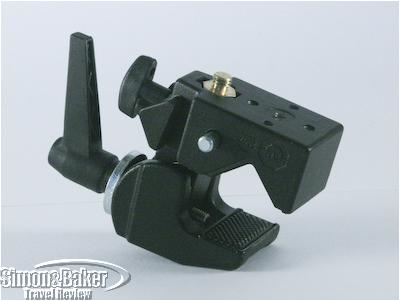
The Super Clip with Tripod Screw Head
The Wimberley tripod head uses a gimbal-type design to balance the camera and lens in all three dimensions. This greatly reduces the strain and potential shake of using it free hand, and the flexibility of movement is a big improvement over bean bag solutions I have tried. It is well engineered, with a solid feel, easy to use adjustments and clean lines. One notable issue, because it is mounted on the vehicle, other people moving around can cause the vehicle to shake, which can be quite annoying at the wrong moment. It is best suited for private to semi-private game drives because the camera extends over the seat in front of the photographer.

The full rig in the field
The photo above shows the full rig, including the external flash mount bar (sold separately). The flash extender completes the telephoto game viewing setup. This configuration, combined with the lens’ image stabilization, provides a great platform for wildlife photography, reducing the annoying windows of downtime in the early morning and late evening when some of the best viewings occur, but the light is too low for a telephoto shot. When the vehicle is moving from sighting to sighting, the flash unscrews from its mount with a thumb wheel and the clamp releases the plate on the camera to avoid shaking the equipment apart on the dirt roads.
The Wimberley Head travels with me whenever the telephoto lens is in the bag. It is now an indispensable element of my camera support equipment.
Wimberley, located in Winchester, Virginia is a small business owned by a father and son team, David and Clay Wimberley, both mechanical engineers dedicated to designing and making professional photography equipment. The company offers a 60-day unconditional money-back guarantee on all of its products and has loaners available through its Free Trial Program. For details visit Tripodhead.com
by Editor | Oct 27, 2008 | Accomodations, Ecotourism, New Articles, Products, Restaurants, Spas
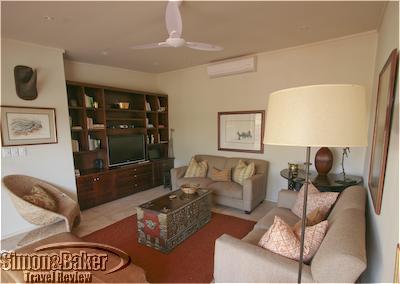
The library in the main building at 1933
A family owned and managed four suite villa on the banks of the Sabie River within the large Sabi Sand Reserve and across from the http://simonandbaker.com/kruger, 1933 offered luxury accommodations including many creature comforts, appetizing home style meals, Big Five game viewing, and a dedicated team of staff for villa guests.
“In fact, 1933 is the family recreating the old camp,” said Nick More, partner and co-owner of the property, about the role of 1933 within the Lion Sands Reserve where it is located. The Lions Sands Reserve is situated within the larger Sabi Sand Reserve. “The old camp which was built in 1936 by my great grandfather and was called Warthog Wallow Camp. Since the great floods of the Sabie River of 2000 our family has wanted to rebuild and rekindle those memories that we created from that camp, and that was achieved late last year, 2007. We called it 1933 in memory of the year in which Lion Sands was first purchased.”
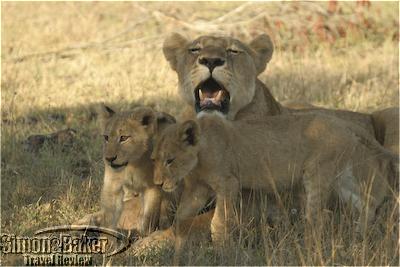
A lioness and her cubs
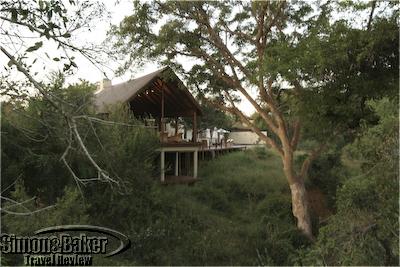
A view of the main building from one of the neighboring suites
“Working at this area where the word ‘no’ does not exist exaggerates the demand of the position in ensuring that every guest in catered for. A home style menu is served daily, allowing me to draw inspiration from the environment which surrounds me, resulting in classic dishes. Lunches are light and simple offering a range of flavours, influenced by combinations to compliment to each other.
Dinner varies from night to night, from home style a la carte dinners, boma, Bush Dinners, each offering a unique feel and experience with a zest of flavours. I also enjoy working with other people as it gives me an opportunity to gain experience in all levels of cooking. It allows me to experience different cultures which I can include in the preparation of my dishes,” said Sannie Mbeva, cook at 1933.
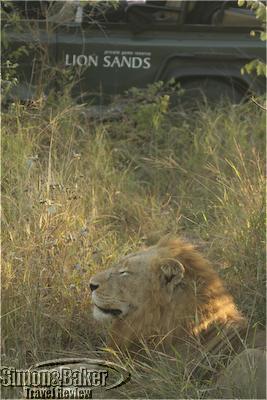
Guests view a sleepy male lion at Lion Sands
The newly built riverside rental home provided personal service and posh bush accommodations ideal for small corporate groups, celebrities and families. 1933, ensconced within the world famous Sabi Sand Reserve, was a setting of lavish comfort in a game viewing reserve, offering guests the pleasure and space of a carefree home and exclusive access to the property for the duration of their stay. Our team’s visit was enhanced by private game drives, delicious meals and on site spa treatments. Click here to read a dedicated article about 1933.
by Editor | Oct 6, 2008 | Products
By Elena del Valle
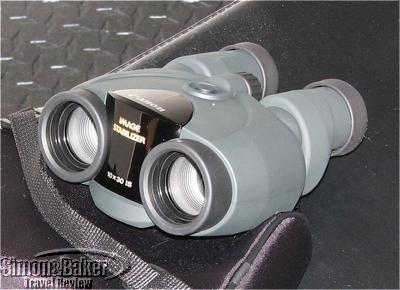
My Canon 10 x 30 IS binoculars
After years of borrowing binoculars while on safari I decided I wanted a pair of good quality binoculars to get the most out of my game viewing trips. I had tried a pair of high end binoculars at one of the luxury properties we stayed in during a trip in late 2007 and realized how much I was missing by not having my own high quality binoculars.
The challenge was that the price of the binoculars I had tried was $2,000 and up. Considering the travel time and cost of a safari trip and the effort to reach the destination I wanted as good a pair as possible and was willing to look closely at the options. At the same time, with the luggage weight restrictions and increasing pilfering problems at airports it would not be safe to pack my new binos with the checked in luggage. Our carry-on luggage allowance was severely strained already with computers, camera gear, food, emergency clothing and adding binoculars would be difficult.
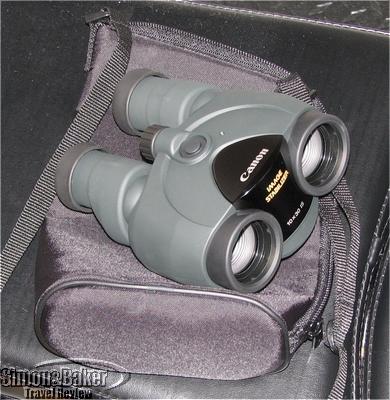
My binoculars came with a carrying case, lens covers and a shoulder strap
When I first heard about the new Canon binoculars with image stabilizer, Canon 10 x 30 IS, I was skeptical. Could these new battery operated binoculars with image stabilizing technology really improve the quality of my game viewing experience without costing or weighing a ton?
After a three week safari trip to Botswana and South Africa I can answer that question confidently, yes. The image stabilizing feature came in handy many times, especially when I was viewing birds and animals in action or far away. The binoculars were light and small enough to carry with easily on game drives and in our carry-on luggage.
Using the binoculars was simple. I adjusted the lenses to my viewing preferences and whenever I wanted added clearness I pressed the image stabilizer button located in the top middle of the binoculars. The only inconvenience was that in order for the feature to work I had to keep pressing the button. A soon as I released it the stabilizing function stopped.
An advantage was that although we brought rechargeable batteries I was able to rely on a single battery set for the entire Southern Africa trip and for another one week trip to Panama shortly after our return from Africa. Overall, the Canon 10 x 30 IS performed well, was easy to carry and well priced.























